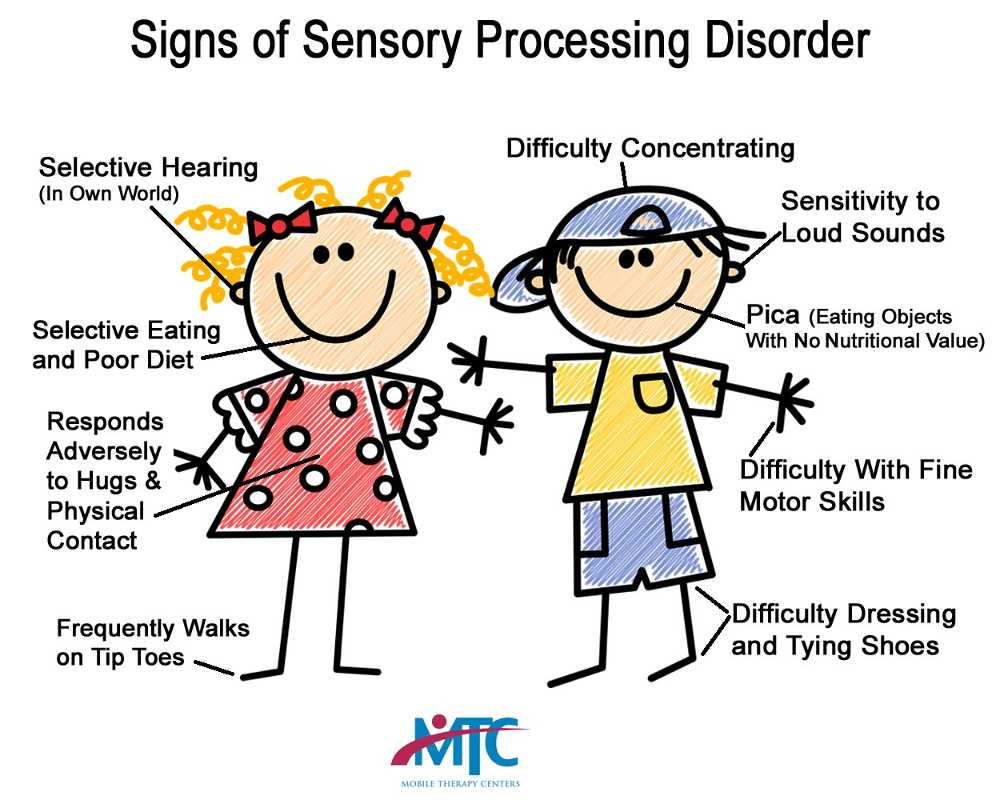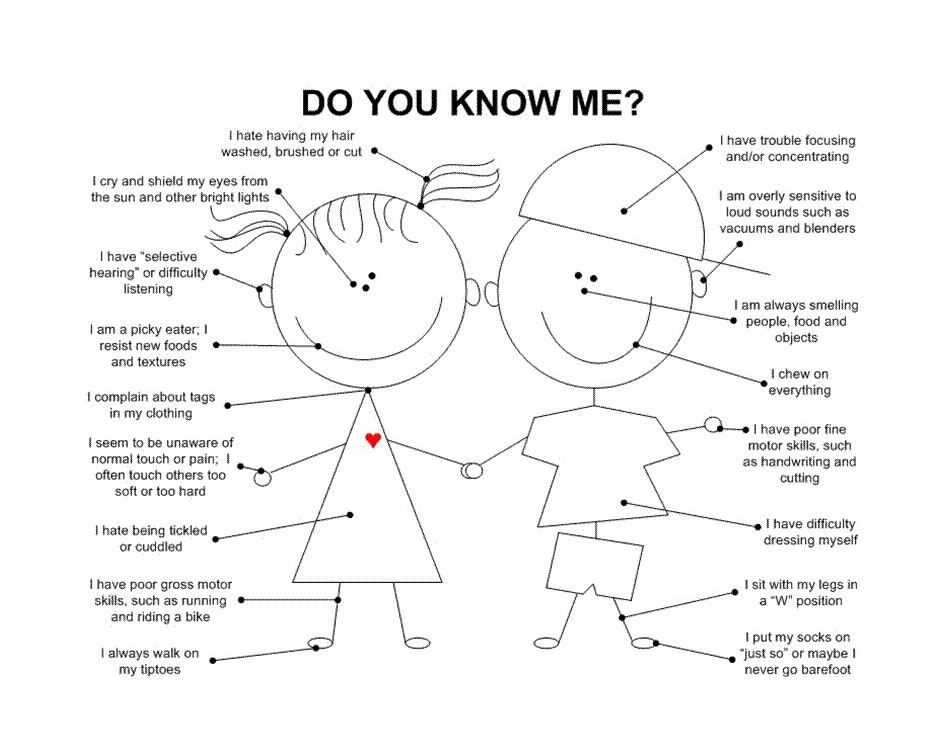

However, many children with sensory issues are not on the spectrum.

Sensory processing problems are now considered a symptom of autism because the majority of children and adults on the autism spectrum also have significant sensory issues. Psychiatrists, however, are quick to note that SPD is not a recognized disorder in the Diagnostic and Statistical Manual. Parents of children with these issues often call it Sensory Processing Disorder, or SPD.

These and other atypical behaviors may reflect sensory processing issues - difficulty integrating information from the senses, which may overwhelm children and result in confusing behavior.
Putting inedible things, including rocks and paint, into their mouths. Having an unusually high or low pain threshold. Throwing tantrums when you try to get them dressed. More baffling - and alarming - to parents are children who exhibit extreme behaviors: They may also notice clumsiness and trouble climbing stairs, and difficulty with fine motor skills like wielding a pencil and fastening buttons. Sensory processing issues are often first recognized during the toddler years, when parents notice that a child has an unusual aversion to noise, light, shoes that are deemed too tight and clothes that are irritating. Identifying the cause can bring relief to both child and parent. A lot of these responses are often misunderstood. If you think your child’s behavior might be caused by a sensory issue, there is a detailed sensory checklist that you can use to learn more, as it covers responses to all different types of input. Some have ADHD, OCD or developmental delays. But not everyone with sensory issues is on the spectrum. Sensory issues are considered a symptom of autism because many people on the autism spectrum experience them. But SPD is not currently a recognized psychiatric disorder. Many parents of children with sensory issues call their behaviors sensory processing disorder, or SPD. Hypersensitive kids avoid strong sensory stimulation and get overwhelmed easily. They often love to move around and crash into things. Hyposensitive kids need more sensory stimulation. In addition to the traditional five senses, there are also two internal senses that give us information about movement and where our body is in space. These behaviors happen because the child is having trouble processing the information they receive from their senses. Some kids show extreme behaviors like screaming when their face gets wet. They may be clumsy or have trouble with fine motor skills like fastening buttons. They might react strongly to loud noises or bright lights or complain that their clothes are uncomfortable. Kids with sensory processing issues behave in ways that their parents often find confusing.







 0 kommentar(er)
0 kommentar(er)
